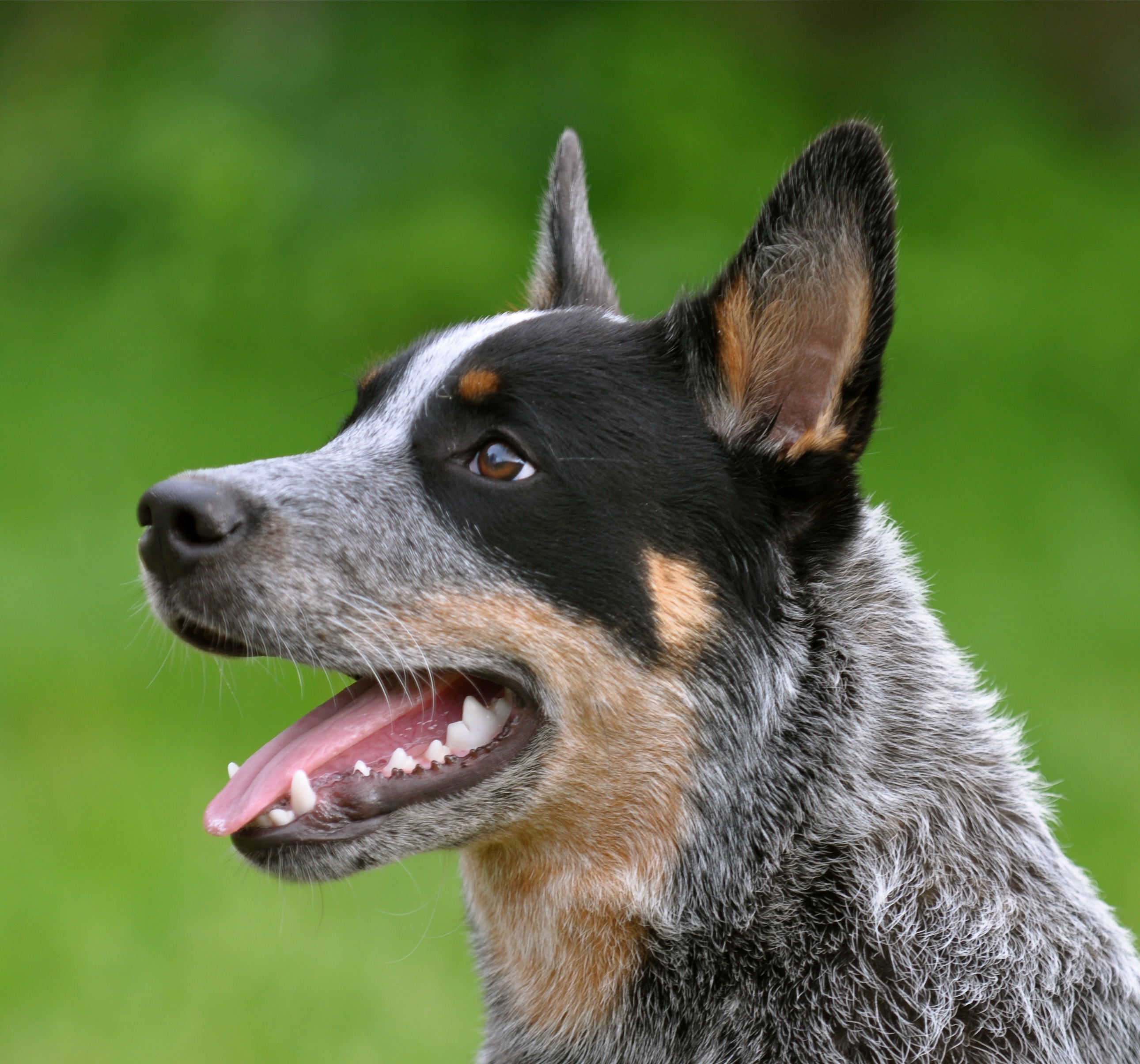
The Breed History
The importation of the Blue Merle Smooth-coated Highland
Collie from Scotland crossed with native Dingos produced the
required base type for managing feral cattle in large land tracts
around Australia. Further crosses with Dalmation (the Bagust's
Dog) and Black and Tan Kelpie finalized the current breed type.
Breed development progressed throughout the 1800s. First breed
standards were drawn up in the year 1902. AKC registry occurred
in the year 1980. The older breed names include the word heeler,
which indicates a dog that works silently at the heels, and crouches
low to prevent being kicked after gripping at the coronet or fetlock
area of the livestock.
Breeding for Function
These silent durable dogs were highly valued for the protection and
herding of large herds of difficult cattle under severe environmental
conditions. High efficiency in their work allowed them to last all
day in marked temperature extremes. They are also used in field and
farm work for sheep, and fowl or hogs.
Physical Characteristics
Height at Withers: female 17-19" (43-48 cm), male 18-20" (45.5-51 cm).
Weight: 35-45 lb (16-20 kg).
Coat: The moderately hard weather resistant coat is double and
straight. The undercoat is short and dense. Colors are blue (blue
mottled appearance acceptable) or red speckle with or without other
markings. Specific markings are set out in the standard. Puppies are
born light to white because of the Dalmation breed effect.
Longevity: 12-13 years
Points of Conformation: A sturdy well balanced conformation
and highly energized movements characterize this working dog.
Utility has dictated points of conformation. They possess a broad
skull, a strong profile with definite stop, the muzzle is deep and
lips tight, and the nose is always black. They appear dingo-like in
many regards. Dark brown eyes are oval, medium-sized, and a sharp
stare is normal. Pricked ears are wide set and small to medium in
size, and the neck is medium in length and not throaty. The topline
is level, thorax deep, ribs well sprung, and the rib cage remains
deep caudally. The limbs are straight-boned, feet are round and the
toes well arched. The low set tail is slightly curved and reaches to
the tarsus. The tail has a brush. A strong smooth gait that appears
effortless, and a strong rear quarter driving effort should be
apparent.
Recognized Behavior Issues and Traits
Breed attributes ascribed include: Devoted, hard working, aloof and
wary with strangers, loyal, intelligent, alert and vested with a high
level of courage. Because of their strong protective instincts, these
dogs should be introduced to children and small pets when young.
They are intricate problem solvers, and work well independently
once trained. They have high trainability. They are good watchdogs,
but not alarm barkers. They can be aggressive with other dogs and
dominant with children. They have high exercise needs and need
a rural setting or large fenced enclosure, plus games or jobs to
prevent boredom vices. They enjoy human companionship.
Normal Physiologic Variations
None reported
Drug Sensitivities
None reported
Inherited Diseases
Progressive Retinal Atrophy (PRA): Autosomal recessive prcd
form. Inherited retinal degeneration leading to blindness. Age of
onset between 3-8 years of age. Dorn reports a 12.88x odds ratio
for the disease versus other breeds. Optigen prcd testing reports
15.9% affected, and 47.7% carrier in Australian Cattle Dogs. The
Australian Cattle Dog Club of America has all Optigen test results
posted on the OFA Website. There are some Australian Cattle Dogs
diagnosed with a different form of PRA than prcd.
Hip Dysplasia: Polygenically inherited trait causing degenerative
joint disease and hip arthritis. OFA reports 15.3% affected.
Elbow Dysplasia: Polygenically inherited trait causing elbow
arthritis. OFA reports 11.6% affected.
Patella Luxation: Polygenically inherited laxity of patellar
ligaments, causing luxation, lameness, and later degenerative joint
disease. Treat surgically if causing clinical signs. OFA reports 1.6%
affected.
Primary Lens Luxation (PLL) and Secondary Glaucoma: An
autosomal recessive gene causes primary lens luxation. Homozygous
affected dogs usually develop lens luxation between 4-8 years of
age. Rarely, heterozygous carriers can develop lens luxation, but
at a later age. Lens luxation can lead to secondary glaucoma and
blindness. A genetic mutation has been identified, and a genetic
test is available. One study reports a 3.1x odds ratio for secondary
glaucoma versus other breeds.
Spongiform Leukoencephalomyelopathy (Polioencephalomyopathy):
Rare maternally (mitochondrial) inherited disorder
causing tremors, spastic weakness, ataxia, occasionally seizures, and
eventual paralysis beginning at 2-9 weeks of age. Caused by a point
mutation in the cytochrome b gene.
Disease Predispositions
Deafness: Undetermined mode of inheritance though familial
pattern. Present at birth. Not associated with a specific color variety
in this breed. Strain reports 12.2% unilaterally deaf, and 2.4%
bilaterally deaf Australian Cattle Dogs. Diagnosed by BAER testing.9
Hypothyroidism: Inherited autoimmune thyroiditis. 7.7% positive
for thyroid auto-antibodies based on testing at Michigan State
University. (Ave. for all breeds is 7.5%).
Cataracts: Anterior and posterior cataracts are equally represented
in the breed with intermediate and punctate cataracts. Identified
in 4.95% of Australian Cattle Dogs CERF examined by veterinary
ophthalmologists between 2000-2005. CERF does not recommend
breeding any Australian Cattle Dog with a cataract.
Portosystemic Shunt (PSS, Liver Shunt): Undetermined mode of
inheritance but familial pattern. Abnormal blood vessels connecting
the systemic and portal blood flow. Vessels are usually intrahepatic
in this breed, with a tendency to a right divisional location. Causes
stunting, abnormal behavior and possible seizures. Australian
studies show significantly higher prevalence in the breed compared
to other breeds.
Primary Glaucoma: Ocular condition causing increased pressure
within the eyeball, and secondary blindness due to damage to the
retina. United States study of dogs presented to veterinary teaching
hospitals showed an increased prevalence in male Australian
Cattle Dogs. Dorn reports a 2.07x odds ratio for the disorder
versus other breeds. Gelatt reports 1.51% Australian Cattle Dogs
affected between 1994-2002. Diagnose with IOP (tonometry) and
examination of the iridocorneal angle (gonioscopy).
Cysinuria and Cystine Bladder Stones: Caused by a metabolic
abnormality in cystine metabolism. Australian Cattle Dogs are
found to have an increased incidence.
Persistent Pupillary Membranes: Strands of fetal remnant
connecting; iris to iris, cornea, lens, or involving sheets of tissue.
The later three forms can impair vision, and dogs affected with
these forms should not be bred. Identified in 1.03% of Australian
Cattle Dogs CERF examined by veterinary ophthalmologists between
2000-2005.
Ceroid Lipofucinosis: Rare storage disease causing progressive
blindness and incoordination between 1 and 2 years of age.
Isolated Case Studies
Myotonia Hereditaria: An Australian Cattle Dog with generalized
muscle stiffness and hypertrophy was examined, and determined to
be homozygous recessively affected due to a mutation in the CLCN1
gene. No heterozygous Australian Dogs were identified, and it is
not known if this gene is disseminated in the general population. A
direct genetic test is available from the University of Guelph AHL.
Achromatopsia (Day Blindness): Observed in a 12-month-old
Australian cattle dog.
Dermatomyositis, Osteochondrosis of the Hock, Pelger-Huet
Anomaly and von Willebrand's disease are reported.
Genetic Tests
Tests of Genotype: Direct test for prcd-PRA is available from
Optigen and recommended for all breeding individuals.
Direct test for primary lens luxation is available from OFA and
Animal Health Trust.
Direct test for a rare myotonia gene is available from the U-Guelph
AHL.
Direct test for black, brown, and yellow colors is available from
VetGen.
Tests of Phenotype: CHIC Certification: Required tests include
hip and elbow radiographs (2 years of age or older), CERF eye
examination (2 years of age or older), gene test for prcd-PRA, and
BAER hearing test. Optional tests include patella evaluation (over 1
year of age), cardiac evaluation, and hock radiograph for OCD. (See
CHIC website; caninehealthinfo.org).
Recommend thyroid profile including autoantibodies.
Bile acids and blood ammonia tests (fasting and post-feeding) if
suspect portosystemic shunt.
Miscellaneous
- Breed name synonyms: Cattle Dog, ACD, Australian Queensland
Heeler, Blue Heeler, Queensland Heeler, Hall's Heelers
- Registries: AKC, UKC, CKC, KCGB (Kennel Club of Great Britain),
ANKC (Australian National Kennel Club), NKC (National Kennel Club)
- AKC rank (year 2008): 68 (1,294 dogs registered)
- Breed resources: Australian Cattle Dog Club of America:
acdca.org/
Australian Cattle Dog Health, Education and Welfare, Inc,
(ACDHEW): acdhew.org
Australian Cattle Dog Club of Canada: acdcc.ca
Australian Cattle Dog Society of Great Britain:
acdsocietyofgb.com
Photo Gallery of Breed - Australian Cattle Dog - Dog Breed



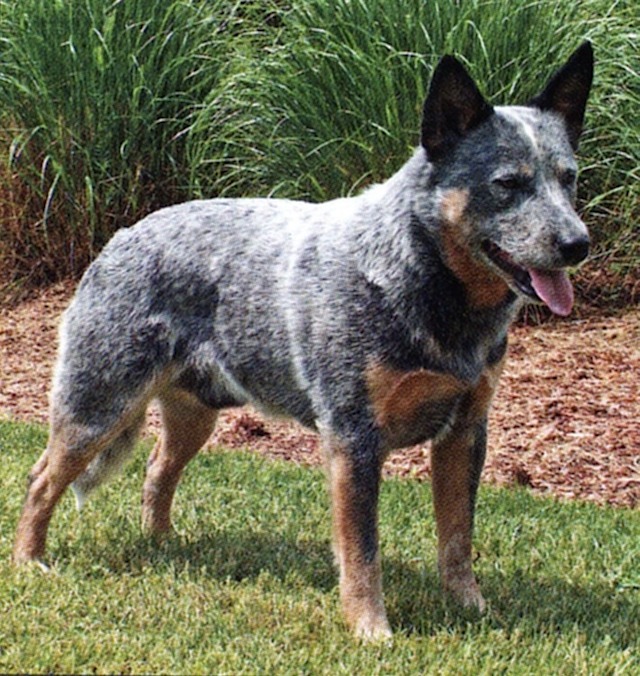
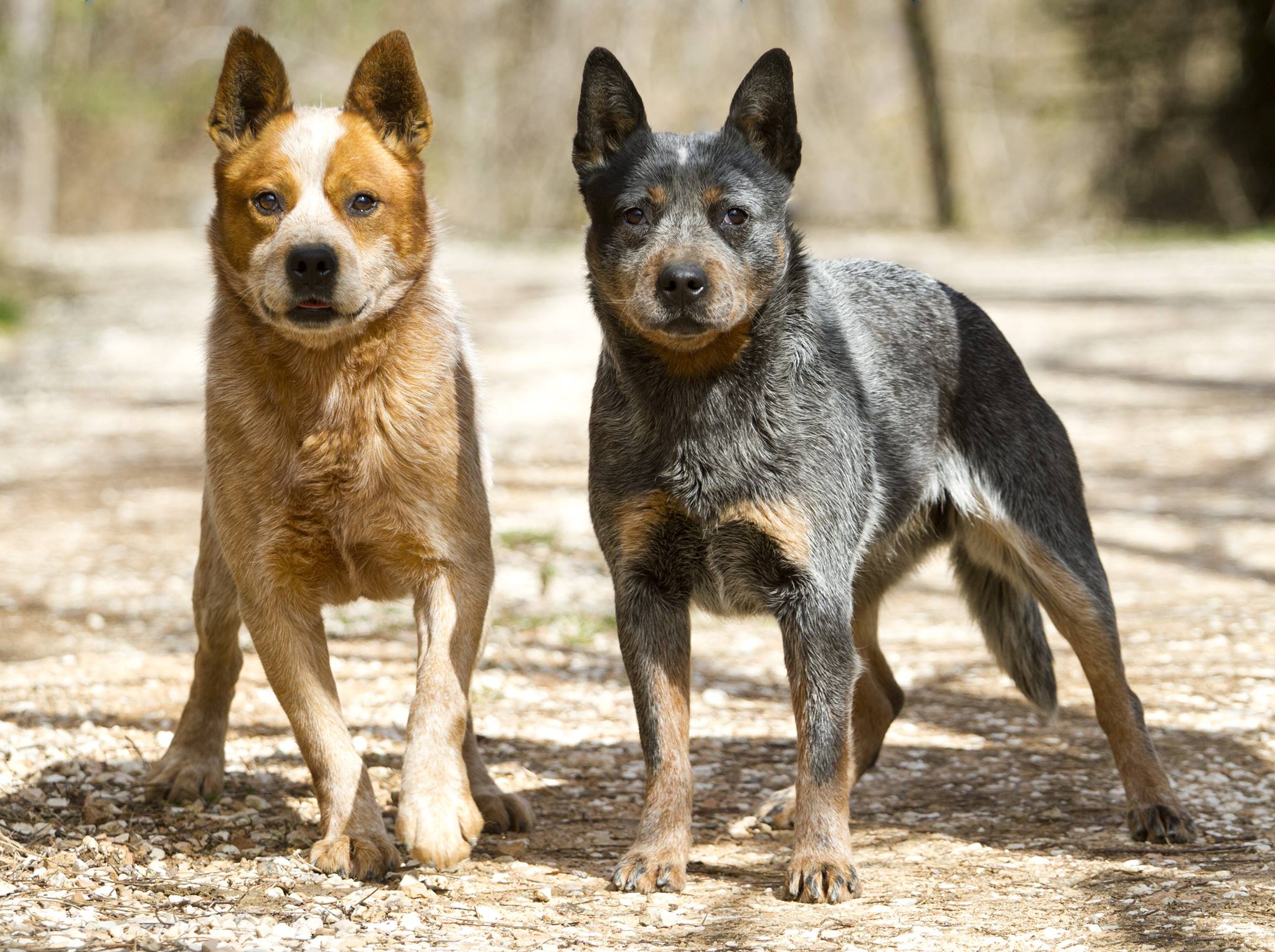
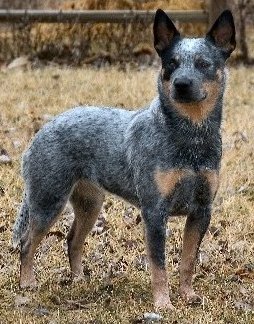

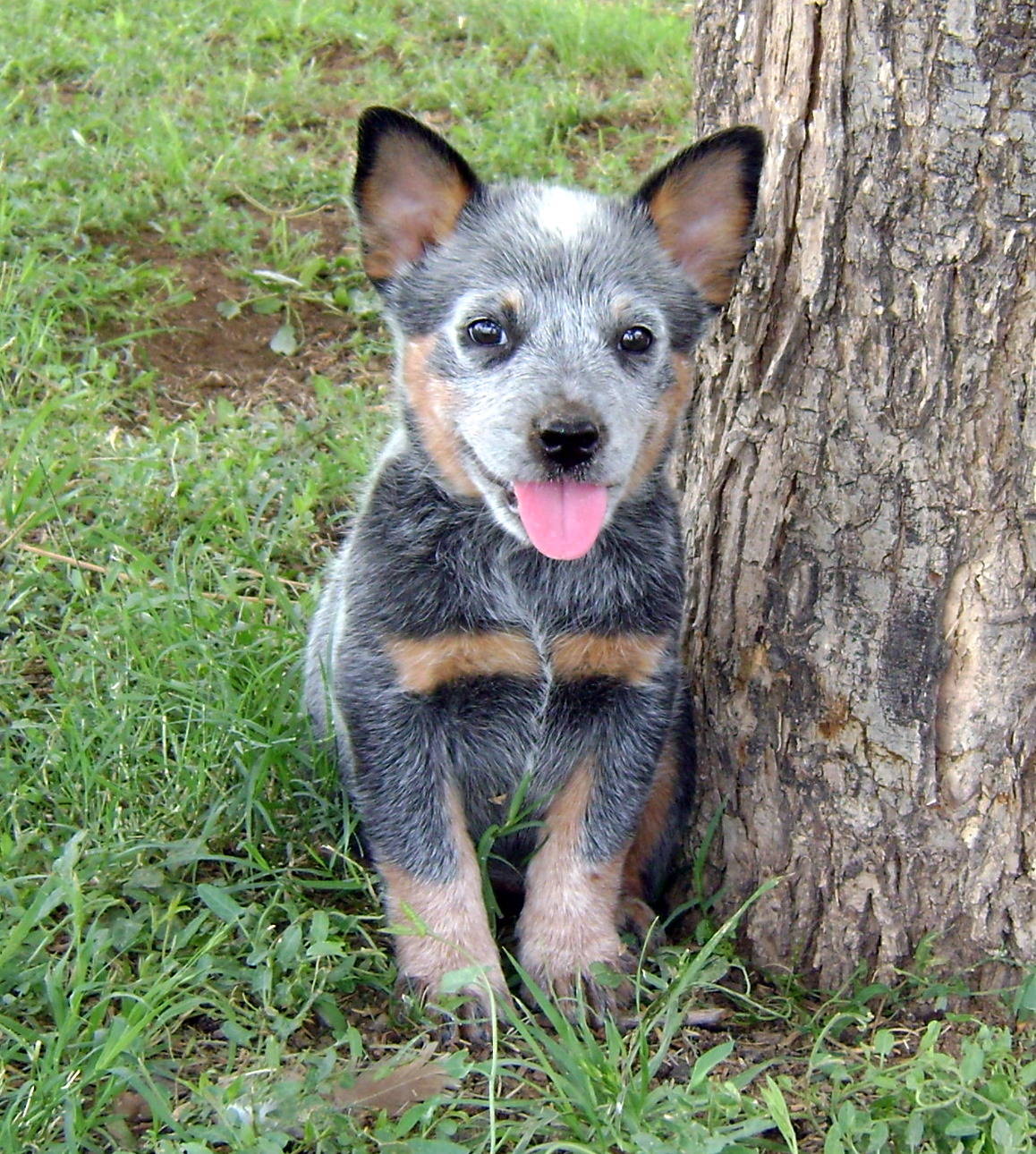
 Animalia Life
Animalia Life